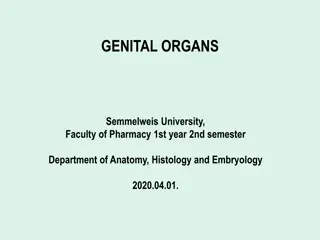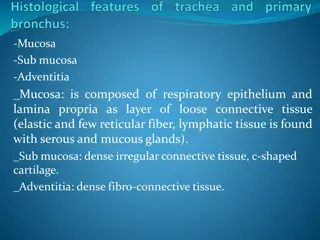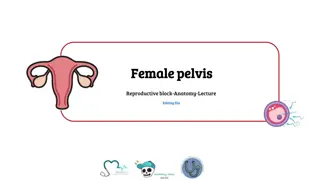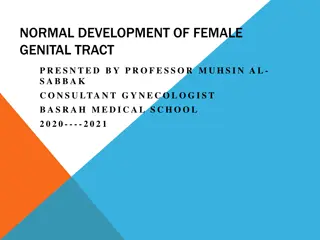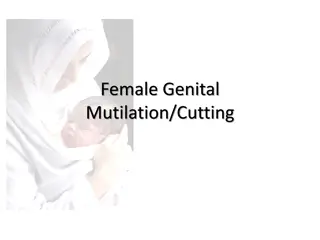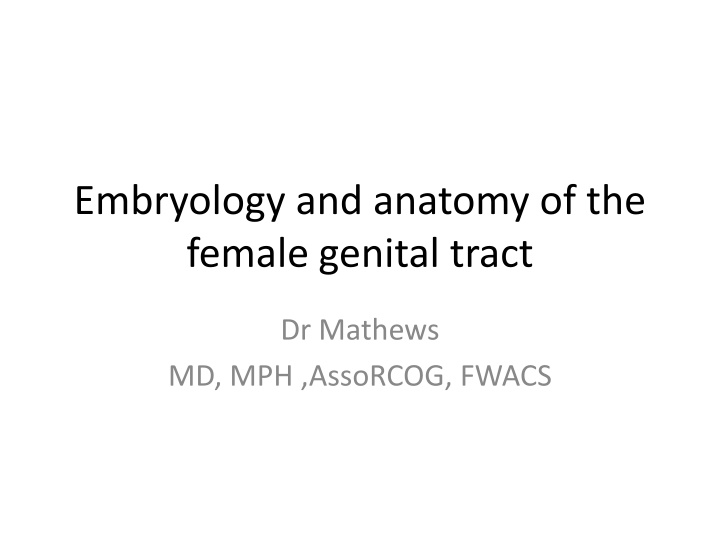
Embryology and Anatomy of Female Genital Tract Development
Understand the fascinating journey of female genital tract development, from embryology to anatomy. Explore the intricacies of ovarian descent, external genitalia formation, and the unique features of the vulva. Delve into topics like mons pubis growth and labia majora characteristics in this comprehensive guide.
Download Presentation

Please find below an Image/Link to download the presentation.
The content on the website is provided AS IS for your information and personal use only. It may not be sold, licensed, or shared on other websites without obtaining consent from the author. If you encounter any issues during the download, it is possible that the publisher has removed the file from their server.
You are allowed to download the files provided on this website for personal or commercial use, subject to the condition that they are used lawfully. All files are the property of their respective owners.
The content on the website is provided AS IS for your information and personal use only. It may not be sold, licensed, or shared on other websites without obtaining consent from the author.
E N D
Presentation Transcript
Embryology and anatomy of the female genital tract Dr Mathews MD, MPH ,AssoRCOG, FWACS
Development of Reproductive Organs Gonadal ridge: forms in embryo at 5 weeks and gives rise to gonads. The primary germ cells originate in the yolk sac. Wolffian ducts: form male duct (vas deferens) Mullerian ducts: form female duct (uterine tube) Both ducts are present in embryo-only one develops! External genitalia develops from same structures Labioscrotal swelling: Scrotum = Labia majora Urethral folds: Penile Urethra = Labia minora Genital tubercle: Penis = Clitoris
Female Development Ovaries descend into pelvis Vaginal process: out-pocketing of peritoneum guides descent Gubernaculum: guides descent of ovaries; attached to labia majora caudal portion = round ligament of uterus cranial portion = ovarian ligament
EXTERNAL GENITALIA Individual differences in: Size Coloration Shape Of external genitalia are common The vulva refers to those parts that are outwardly visible The vulva includes: Mons pubis Labia majora Labia minora Clitoris Urethral opening Vaginal opening Perineum 6
MONS PUBIS The triangular mound of fatty tissue that covers the pubic bone It protects the pubic symphysis During adolescence sex hormones trigger the growth of pubic hair on the mons pubis Hair varies in coarseness curliness, amount, color and thickness 8
LABIA MAJORA Referred to as the outer lips They have a darker pigmentation The Labia Majora: Protect the introitus and urethral openings Are covered with hair and sebaceous glands labia minora: smaller, hairless folds inside labia major Tend to be smooth and moist Become flaccid with age and after childbirth 9
CLITORIS Highly sensitive organ composed of nerves, blood vessels, and erectile tissue Located under the prepuce It is made up of a shaft and a glans Becomes engorged with blood during sexual stimulation Key to sexual pleasure for most women Urethral opening is located directly below, it is superior to vestibule crura, prepuce, corpus cavernosum NO corpus spongiosum 10
FEMALE 11
VAGINAL OPENING INTROITUS Opening may be covered by a thin sheath called the hymen Using the presence of an intact hymen for determining virginity is erroneous Some women are born without hymens The hymen can be perforated by many different events 12
PERINEUM The muscle and tissue located between the vaginal opening and anal canal It supports and surrounds the lower parts of the urinary and digestive tracts The perineum contains an abundance of nerve endings that make it sensitive to touch An episiotomy is an incision of the perineum used during childbirth for widening the vaginal opening 13
INTERNAL GENITALIA The internal genitalia consists of the: Vagina Cervix Uterus Fallopian Tubes Ovaries 14
VAGINA The vagina connects the cervix to the external genitals It is located between the bladder and rectum It functions : As a passage way for the menstrual flow For uterine secretions to pass down through the introitus As the birth canal during labor With the help of two Bartholin s glands becomes lubricated during SI Vagina have 3 layers, thinner vaginal orifice 16
CERVIX The cervix connects the uterus to the vagina The cervical opening to the vagina is small This acts as a safety precaution against foreign bodies entering the uterus During childbirth, the cervix dilates to accommodate the passage of the fetus This dilation is a sign that labor has begun 17
PERINEUM 18
UTERUS Commonly referred to as the womb A pear shaped organ about the size of a clenched fist It is made up of the endometrium, myometrium and perimetrium Consists of blood-enriched tissue that sloughs off each month during menstrual cycle The powerful muscles of the uterus expand to accommodate a growing fetus and push it through the birth canal 19
The Uterus Uterus 3 Layers perimetrium myometrium endometrium Anatomy fundus body isthmus cervix Location anterior to rectum posterior to bladder
OVIDUCTS 21
FALLOPIAN TUBES Serve as a pathway for the ovum to the uterus Are the site of fertilization by the male sperm Often referred to as the oviducts or uterine tubes Fertilized egg takes approximately 3 to 7days to travel through the fallopian tube to implant in the uterine lining 22
Oviduct Muscular tube 12 cm long Upper end opens into peritoneal cavity near ovary Lower end passes through the uterus wall 4 segments intramural part in uterine wall (cornue) isthmus is adjacent to uterine wall ampulla is dilated part infundibulum is funnel-shaped part near ovary with fimbriae
The Fallopian tube (Oviduct) Uterine tubes = Oviducts from near ovaries to uterus infundibulum expanded, proximal portion fimbrae on edges Movement of Ova in Oviduct receives oocyte after ovulation peristaltic waves cilia lining tube contains cells to nourish ova Site of fertilization Ectopic pregnancy: implantation of zygote outside of uterus
OVARIES The female gonads or sex glands They develop and expel an ovum each month A woman is born with approximately 400,000 immature eggs called follicles During a lifetime a woman release @ 400 to 500 fully matured eggs for fertilization The follicles in the ovaries produce the female sex hormones, progesterone and estrogen These hormones prepare the uterus for implantation of the fertilized egg 27
The Ovary Ovaries (paired) produce and store ova (eggs) Tunica albuginea - surrounds each ovary Arterial Supply Ovarian artery branches of Uterine artery Ligaments Ovarian ligament connects ovaries to uterine wall (medial) Suspensory ligament connects ovaries pelvic wall (lateral) Broad ligament supports uterus, oviducts
Ovary Almond shaped, 3 cm X 1.5 cm Medulla with vessels and loose connective tissue Cortex with ovarian follicles and oocytes Cortical stroma has fibroblast-like cells Surface has simple squamous/cuboidal germinal epithelium covering thick layer of dense irregular connective tissue, the tunica albuginea
Nerve and Arterial supply of the female genital tract Innervation: branches of Pudendal nerve Arterial Supply: Uterine arteries + arcuate branches of hypogastric vessels = uterus Ovarian arteries + ovarian branches of uterine arteries = ovaries
Undifferentiated Differentiated
Various fusion abnormalities of the uterus and vagina. (a) Normal appearance; (b) arcuate fundus with little effect on the shape of the cavity; (c) bicornuate uterus; (d) subseptate uterus with normal outline; (e) rudimentary horn; (f) uterus didelphys; (g) normal uterus with partial vaginal septum.
An imperforate membrane occluding the vaginal introitus in a case of haematocolpos. Vulval appearances in a case of absence of the vagina.
Key Points A common presentation is primary amenorrhoea in a female with 46,XX karyotype and normal secondary sexual characteristics. There may be associated abnormalities of the kidneys, skeletal system, heart and auditory system. Magnetic resonance imaging or CT scan is a useful diagnostic tool with which to assess the anatomical abnormalities. Management involves psychological support, simple excision, hysteroscopic resection, Metroplasty, Graduated glass dilators and creation of a neovagina for sexual function.


